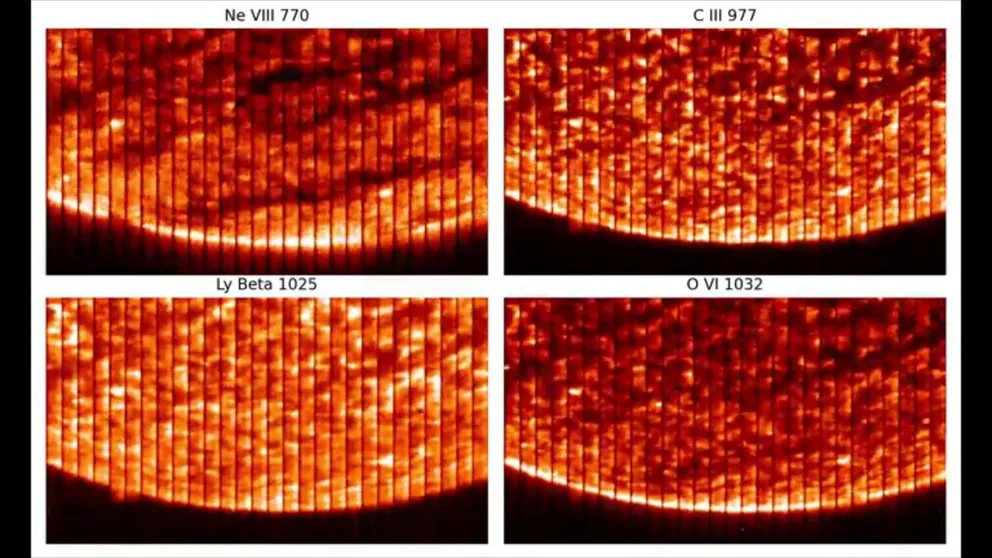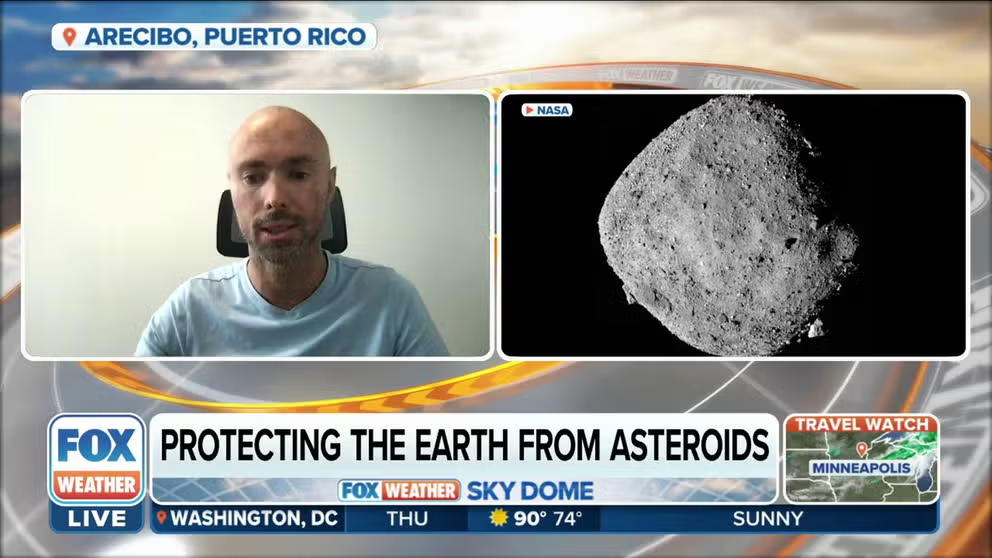Watch out for these astronomical events in 2024
Here is your guide to 2024 celestial events. The year will feature 12 full Moons, plenty of meteor showers, five eclipses and four Supermoons.
2024 Moon phases for the Northern Hemisphere
NASA produced rendering of the Moon's phases during 2024.
Our solar system is estimated to be 4.5 billion years old and is made of eight planets, more than 4,000 comets and countless other features, each with the potential of lighting up the night’s sky.
Advancements in astronomy mean many of the events are tracked, allowing scientists to determine years ahead of time when celestial bodies may be visible from Earth.
In 2024, the sky will be illuminated by 12 full Moons, plenty of meteor showers, five eclipses and four Supermoons.
Here's a calendar with the best astronomical events you won't want to miss through the year.
7 TIPS ON HOW TO SHOOT THE MOON WITH A CAMERA
January
3rd-4th: Quadrantid meteor shower peak
The annual meteor shower, which begins in late December, peaks in early January every year.
Some skygazers consider the meteor shower the best of the year because of the lack of moonlight, but the event’s peak only lasts a few hours each night.
NASA said that during the height of activity, dozens of meteors can be seen every hour if the skies are clear and there is minimal light pollution.
12th: Mercury visible before sunrise
The first planet in our solar system will reach its greatest elongation from the Sun in mid-January.
This event will result in great viewing of the planet, especially just before sunrise, when it is at the highest point in the sky.
Watch the eastern sky in order to capture a view of the rocky planet.
Watch Mercury fly by the sun
An orbiter captured stunning imagery of the planet Mercury appearing to pass close by the sun. (European Space Agency)
25th: Full Wolf Moon
The first full Moon of the year will rise in the east and peak at 12:54 p.m. EST, meaning the best viewing in North America will be Thursday evening after sunset.
According to the Farmers' Almanac, the nickname originates from the time period when Native Americans noticed wolves howling in hunger at the Moon.
Other notable names for the lunar body include the Center Moon and the Cold Moon – all serve as reminders that the Northern Hemisphere is in the heart of winter.
STUNNING VIDEO SHOWS MERCURY PASSING BY THE SUN
February
8th: Southern Hemisphere to see stargazing action
This early February date is setting up to be a skywatcher’s dream, but not if you are in North America.
Several planets will be visible, and the Alpha Centaurids meteor shower is set to peak.
If you are in the United States, don't worry about looking up for any of the events. They’ll be too far beyond the horizon to be visible.
At best, there may be good visibility of Mars, but that is relatively common.
15th: Planetary watch
A variety of planets will be visible, but how many you’ll be able to see will depend on your location.
Due to their orbits, some will be able to see the Moon, Jupiter, Mars or Pluto.
Check out NASA’s daily skywatching guide for the best time to see asteroids, planets, constellations and more.
24th: Full Snow Moon
The year's second full Moon will peak in brightness toward the end of the year’s shortest month.
The Snow Moon will reach full status at about 7:30 a.m. EST, meaning it would be best to catch it before sunrise Saturday or wait until the evening.
The nickname comes from February usually being a chilly month with plenty of snow on the ground in the northern latitudes.
If the Moon appears to be smaller and less impressive than usual, you are right.
The Moon is at one of its furthest points from Earth and is known as a micromoon.
On an average day, the Moon is some 238,000 miles away from Earth, but during the mircomoon phase, the distance increases to about 252,000 miles.
FIRST COLOR IMAGES FROM NASA'S JAMES WEBB SPACE TELESCOPE REVEAL BRILLIANT NEBULA, GALAXY CLUSTERS
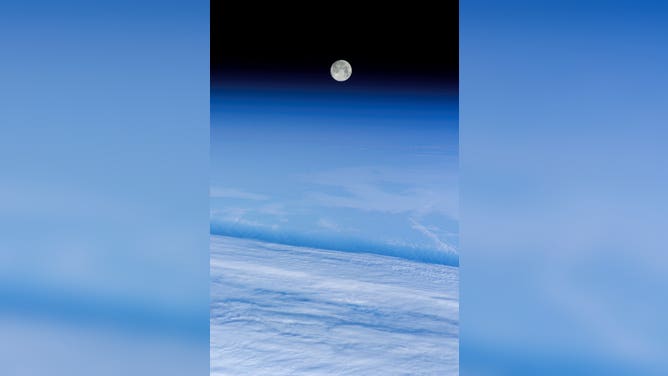
Snow moon over Earth taken from the International Space Station 02/12/06.
(NASA)
March
19th: Spring equinox
Astronomical spring will begin on Tuesday, March 19, at 11:06 p.m. EDT.
During this event, the Sun's rays will be directly over the equator, meaning places both north and south of the equator have nearly equal amounts of day and night.
The occurrence, also known as the vernal equinox, means the continuation of earlier sunrises and later sunsets in the Northern Hemisphere through June's summer solstice.
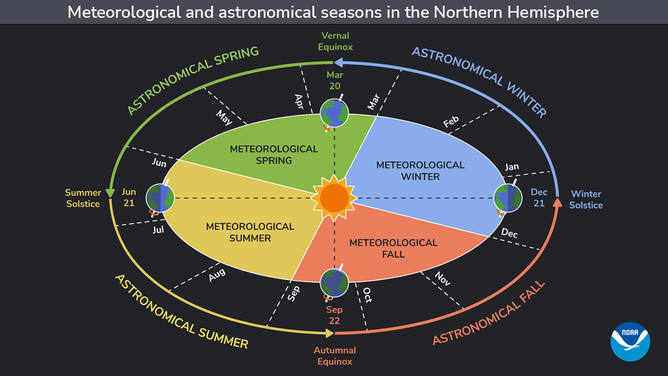
When the meteorological and astronomical seasons take place.
(NOAA)
25th: Full Worm Moon & lunar eclipse
The first full Moon of spring is known as the Worm Moon and will reach its peak around 3 a.m. ET.
At times, the Moon might seem dimmer than usual, and that’s because the celestial body is set to pass through Earth’s shadow, during what is known as a penumbral lunar eclipse.
Most of the world will be able to see the eclipse, but because the Moon is not passing directly between the Sun and the Earth, the effects are minimal when compared to an event such as a total lunar eclipse.
Astronomers said you’ll want to use binoculars or a telescope to fully appreciate the subtle change when the Moon passes through Earth’s shadow.
Since the full Moon will be the first after the spring equinox, it is also known as the paschal full Moon. It is used to determine the date of Easter, which occurs on the first Sunday after the lunar event. This year, the Easter holiday falls on March 31, 2024.
SEE THE OBJECTS HUMANS LEFT BEING ON THE MOON
April
8th: Total solar eclipse
The Moon will completely block out the Sun on Monday, April 8, 2024, across large parts of Central and North America.
The solar eclipse will take place during the afternoon and will travel over Mexico, into Texas and across 14 other states before exiting through Canada. Totality will last less than 10 minutes, but that is not stopping communities from planning celebratory events.
Solar eclipses happen about twice a year, but finding yourself in one is considered rare. According to the American Astronomical Society, any given spot on the planet only sees temporary darkness from the Moon’s shadow once every 400 years.
The last total solar eclipse to travel across the Lower 48 occurred in 2017, and the next one won’t happen until 2045.
Astronomers remind everyone that it is never safe to look directly at the Sun without specialized eye protection.
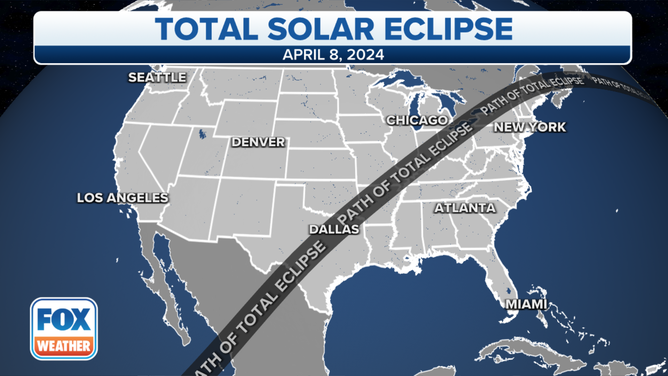
Path of totality during the Great North American Solar Eclipse on April 8, 2024.
(FOX Weather / FOX Weather)
21st-22nd: Lyrid meteor shower
Space debris from comet C/1861 G1 Thatcherm will be visible during the night of April 21st and the morning of April 22nd.
NASA said the comet was originally discovered by astronomer A.E. Thatcher in 1861 and since then has not completed an entire orbit around the Sun.
The comet is estimated to take about 415 years to complete a full orbit.
Usually, this meteor shower is one to stay up for, but due to the brightness created by the Moon, stargazing is expected to be negatively impacted.
23rd: Full Pink Moon
April’s full Moon usually coincides with the sprouting of the season's first flowers.
The full Pink Moon will reach its peak illumination at 7:49 p.m. EDT and be the second full Moon of spring.
The Moon will not appear pink, even though the nickname suggests it.
PIECE OF SPACE SHUTTLE CHALLENGER DISCOVERED OFF FLORIDA COAST 37 YEARS LATER
May
5th-6th: Eta Aquarid meteor shower
Halley’s Comet usually produces one of the better meteor showers of the year to check out.
NASA said the Eta Aquarids usually lead to about 60 meteors per hour, but the best viewing is from the Southern Hemisphere.
The best viewing will be if the skies are clear, and you are well away from any light pollution.
The comet is thought to be at least 16,000 years old and also causes October's Orionids meteor shower.
The American Meteor Society suggests that viewing of the event will be better than in recent years because the Moon’s interference will be minimal.
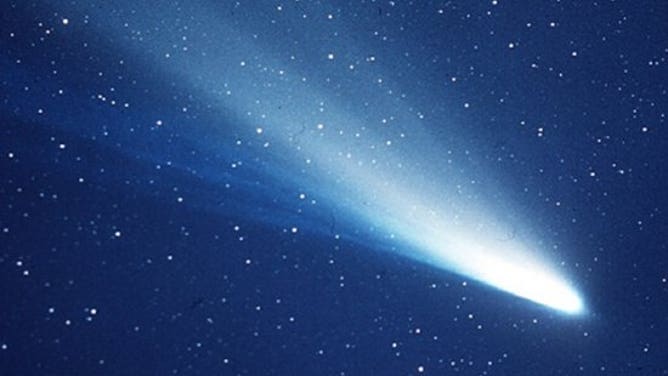
Image taken of Halley’s Comet
(NASA)
23rd: Full Flower Moon
The last full Moon of spring will peak in illumination at 9:53 a.m. ET, meaning residents in North America will either have to view the event on May 22nd or during the night of May 23rd.
The Farmers' Almanac said the Moon gained its nickname through observations by Native Americans who noted flowers were in abundance during the late spring.
Other names for the lunar body include the Corn-Planting Moon and the Milk Moon.
The full Moon is the last of spring, as June will start the rotation of summer Moons.
REPORT FINDS ARTEMIS III MOON LANDING LIKELY YEARS BEHIND SCHEDULE
June
20th: Summer solstice
Earth's North Pole will reach its greatest tilt toward the sun on the summer solstice.
The Earth is tilted at approximately 23.5 degrees. Because of this tilt, most direct sunlight is aimed at the Northern Hemisphere during our summer.
The event marks the arrival of astronomical summer, not meteorological summer, which began on June 1.
The solstice officially arrives at 4:51 p.m. EDT and annually occurs sometime between June 20-22 during any given year.
Even though the Sun’s rays are the most direct, due to a lag time, it still takes about another month for the Northern Hemisphere to experience its warmest temperatures of the year.
An impact that is more instantaneous is the change in the amount of sunlight.
After June 20, daylight will start to decrease across the Northern Hemisphere and will do so through December’s winter solstice.

Hours of daylight (sunrise to sunset) on the summer solstice.
(Dr. Brian Brettschneider)
21st: Full Strawberry Moon
Just a day after astronomical summer begins, the full Moon will reach its peak at 9:07 p.m. EDT.
Since June 20 is also the longest day of the year, you might have to wait especially long for the Sun to set for a proper viewing.
June is the peak season for the strawberry and is the reason behind this full Moon's nickname. Strawberries are typically planted after the last frost in the spring and are ready to be picked during summer.
The Strawberry Moon is only one of two full moons that have nicknames rooted in agriculture.
WHY TORNADO ALLEY IS SHIFTING EAST
July
15th: Trifecta of planets visible in night sky
The planets Mercury, Mars and Uranus will all be visible in the night sky.
Mercury will be apparent just after sunset and should be fairly bright.
Both Mars and Uranus will appear close in the sky during what is known as a conjunction.
The best time to look out for the pair will be during the early morning before sunrise.
Even though the fourth and seventh planets will appear close, they’ll still be more than a billion miles from each other.
21st: Full Buck Moon
The Moon, nicknamed for a male deer, will peak during the morning hours in North America.
The Farmer's Almanac said this full Moon is typically also called the full Thunder Moon or the Hay Moon.
Officially, the Moon will reach peak illumination at 6:17 a.m. EDT, so the best viewing will be either on the night before or after.
It is the last regular full Moon for several months, as the next four events will be Supermoons.
30th: Southern Delta Aquarid meteor shower peak
If you see a meteor anytime from mid-July through the middle of August, it is likely part of the Delta Aquarids.
The meteor shower comes from the comets Marsden and Kracht and will be the first meteor shower to catch a glimpse of during the summer in North America.
NASA said that due to the approaching new Moon, viewing could allow upwards of 20 meteors per hour.
While looking for meteors, make sure to look for Mars and Jupiter. They are expected to appear close to the Moon and be visible through most of the night.
WEATHER WATCHERS NEEDED TO LOCATE CLOUDS ON MARS
August
12th-13th: Perseid meteor shower
One of the more anticipated meteor showers of the year will become active in mid-July and last through mid-August.
The peak of activity is expected to be on the night of Aug. 12 and the morning of Aug. 13.
Debris left over by the Comet Swift-Tuttle is capable of producing up to 100 meteors per hour, making the Perseid meteor shower one of the best meteor showers of the year.
In North America, viewing can start as early as 10 p.m. and last through the pre-dawn hours.
NASA said fireballs, which are bright and large meteors, tend to be bountiful during the Perseids.
19th: Full Sturgeon Moon
North America’s largest freshwater fish is the white sturgeon, and it has a Moon named after it.
The eighth full Moon of the year will peak in brightness at 2:25 p.m. EDT, meaning North America will have to wait for several hours until the Sun sets and the Moon rises to see it in all its glory.
It is widely accepted that the event is known as the Sturgeon Moon because fish in the Great Lakes and other regions of North America are more easily caught before the summer winds down.
August’s full Moon is one of four Supermoons and will appear brighter and larger than the average Moon.
Supermoons occur a few times a year when the lunar body reaches what is known as perigee. Perigee is the closest point to Earth in the Moon's orbit. It will be less than 230,000 miles away.
Due to the increased gravitational pull from Earth’s only natural satellite, higher-than-normal tides will be experienced. These are often called King Tides and can lead to nuisance flooding in coastal communities.

Trees are surrounded by the water from Biscayne Bay as seasonal king tides arrive along with a slow moving rain storm on November 15, 2023 in Miami, Florida.
(Joe Raedle / Getty Images)
In addition to being the full Sturgeon Moon and a Supermoon, it is also known as a seasonal Blue Moon.
A seasonal Blue Moon is the third full moon of an astronomical calendar that has four of these events.
The basis of the name appears to be rather murky, with no solid avenues to trace back to the term’s origin.
The Moon does not turn a hue of blue, and the occurrence of the Blue Moon is fairly common, which is the opposite of the expression "once in a blue moon," which is used to signify a rarity.
September
8th: Saturn's closest approach to Earth
The sixth planet of our solar system will be its brightest all year long as the Sun illuminates the planet.
The yellow-looking planet will be visible without the help of binoculars or a telescope, but if you wish to see its many rings, you’ll need some sort of aid.
According to NASA, the rings of the second-largest planet in our solar system are thought to be made up of rocky, ice space debris.
Some of the planet's 83 moons could also be visible to stargazers who use a telescope.
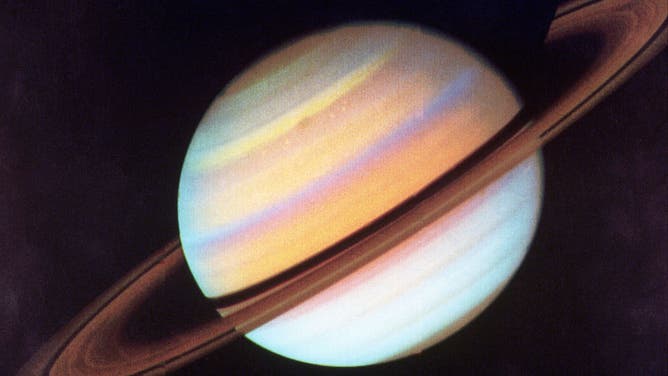
10-28-80 Washington: Image of Saturn taken by the Voyager Spacecraft at a distance of 21.1 million miles. Color enhanced by NASA
(Getty Images)
17th: Harvest Moon
The second Supermoon of the year will peak in illumination about 10:34 p.m.
The event will happen just days before the autumnal equinox on Sept. 22.
The full Moon closest to the equinox earns the nickname of the full Harvest Moon.
Late September and October are typically some of the busiest months for farmers as crops are harvested before cold weather arrives.
According to the Farmer’s Almanac, the Moon is sometimes referred to as the Corn Morn as Native Americans used the extra light to pick crops through the night.
18th: Partial lunar eclipse
The third eclipse of the year will be visible across a large part of the Western Hemisphere.
The event is set to begin just after 10 p.m. when the Moon passes through Earth’s shadow.
Similarly to the March event, binoculars or a telescope are suggested to detect the subtle change in the Moon’s appearance.
A lunar eclipse is not rare and is witnessed about two or three times a year.
The next lunar eclipse that will be visible from the U.S. will be in April 2025.
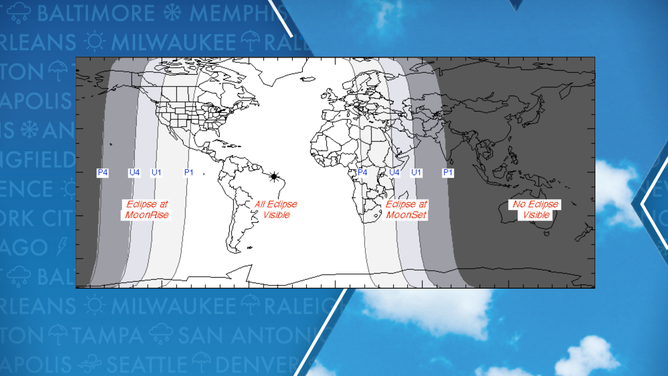
The Moon will pass through Earth's shadow.
(FOX Weather)
20th: Neptune’s closest approach to Earth
Earth will pass between the Sun and Neptune on Sept. 20, marking the closest distance between the two planets.
If skies are clear, the eighth planet will appear as a mere speck in the sky, so the use of a telescope is highly advised.
Even during its closest approach, the planet is some 2.7 billion miles away from Earth. In comparison, the Moon averages some 238,000 miles away from Earth and Mars is estimated to be about 140 million miles from Earth.
22nd: Fall equinox
Astronomical fall will begin on Sept. 22, 2024, at 8:43 a.m.
It is at his moment that Earth’s axis allows the Northern and Southern hemispheres to receive an equal amount of light.
The date also marks the halfway point between summer and winter.
The term equinox is derived from the Latin words aequus, which means equal, and nox, which is night.
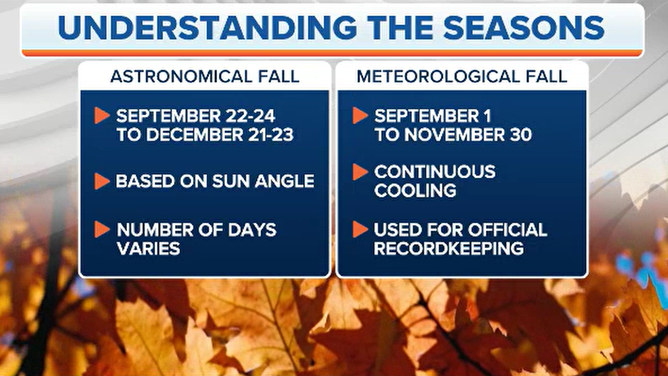
Fall season headlines
(FOX Weather)
UFO SIGHTINGS TO BE STUDIED BY FORMER ASTRONAUT, HANDPICKED NASA GROUP
October
2nd: Annular solar eclipse
The final eclipse of the year will be an annular solar eclipse.
Large parts of the Pacific will see this event, but the only state where the annular eclipse will be visible is Hawaii.
The event will be similar to the eclipse that happened in October 2023, with a so-called ring of fire appearing around the Moon.
Similar to a total eclipse, it is not safe to view the event without specialized eye protection.
The American Astronomical Society maintains a list of reputable sellers of glasses at eclipse.aas.org/resources/solar-filters.
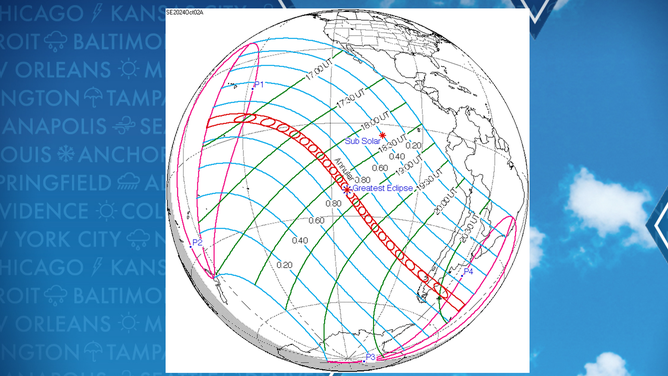
Annular solar eclipse map 2024
8th: Draconid meteor shower
The first of two meteor showers during October will be visible from the 6th to the 10th but is expected to peak on the night of the 8th.
The Draconid meteor shower can be traced back to space debris left behind by comet 21P/Giacobini-Zinner.
According to NASA, the comet was originally discovered in 1900 and shows, as of late, have generally been weak.
The small comet usually produces about a handful of meteors per hour, versus a more active event that can trigger 100 or more.
13th: Comet whizzes by Earth
An event astronomers have circled for more than a year is the flyby of Comet Tsuchinshan–ATLAS.
The comet was discovered in 2023 and will be visible to the naked eye.
Even at its closest point, it is estimated the space feature will be more than 43 million miles away.
"Comet C/2023 A3 is no threat to Earth," said Peter Veres, an astronomer at the Harvard-Smithsonian Center for Astrophysics.
Veres pointed out that its interaction with the Sun prior to Earth’s flyby might even lead to the demise of the dusty, icy object.
"We don't know for sure if it would survive its close approach to the Sun. And if it does, it may be either disappointing or surprising -- if its cometary activity becomes hyperactive," Veres stated.
Sightings of the comet could start as soon as the 12th and last for a week.
Learning the history of asteroids on World Asteroid Day
Maxime Devogele, Observatory Scientist at Arecibo, helps us to understand more about asteroids on World Asteroid Day.
17th: Full Hunter’s Moon
The first full Moon of fall will reach peak illumination at 7:26 a.m. ET, meaning the best nights for viewing will be the evening hours of the 16th into the 17th or the night of the 17th into the 18th.
The Supermoon will also be the closest to Earth, making it appear to be a giant in the fall sky.
According to the Farmers' Almanac, October was the time of the year when Native Americans began stocking up on food for the winter months.
A few days beyond its peak, the Orionid meteor shower is expected to reach its height.
Due to the close timing of these events, most of the meteors will be faint and not visible, courtesy of all the moonlight.
IMPROVED SPACE WEATHER FORECASTS NEEDED TO AVOID DESTRUCTION OF SATELLITES
November
15th: Full Beaver Moon
The last Supermoon of the year will peak during the afternoon, meaning North America will have to wait until after sunset to see the full Moon.
Because of its close approach, the full Beaver Moon will appear as one of the brightest and largest Moons of the year.
According to the Farmer's Almanac, there are varying thoughts about how November’s event got its nickname.
Some believe it originated because of traps put out by Native Americans to capture beavers. Others believe it comes from beavers building their winter dams before waterways freeze.
Similar to the Orionid meteor shower in October, November’s full Moon should impact the viewing of the Leonids.
All may not be lost when trying to catch a sight of November’s meteor shower. The peak is expected to occur during the night of the 17th and into the morning of the 18th, and the overall event is on an uptick in activity.
According to NASA, about every 33 years, the Leonids produce a meteor storm with at least 1,000 meteors per hour.
The last event occurred in 2002, so with each preceding meteor shower, the event should get more vivid until the peak.
WHEN CAN YOU EXPECT THE FIRST SNOW OF SEASON?

Beaver moon rising behind Gran Sasso d'Italia picks is seen from L'Aquila, Italy, on November 7, 2022.
(Lorenzo Di Cola / NurPhoto / Getty Images)
December
6th: Jupiter closest to Earth
The fifth planet of the solar system will be illuminated by the Sun and be visible for the entire night.
Jupiter will still be more than 370 million miles away from Earth, but it will appear as bright as many of the night’s stars.
The use of a telescope or binoculars should enable skygazers to see some of the planet’s 95 moons.
Between dusk and dawn, Venus, Mars and Neptune should also be visible at varying times.
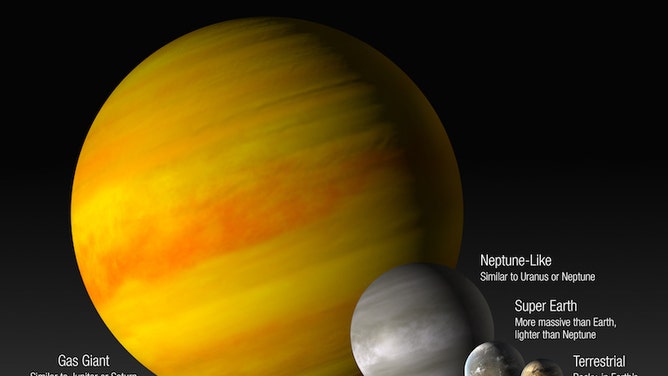
Exoplanets, planets beyond our solar system, whether orbiting other stars or floating freely between them, can make the planets closer to home look tame by comparison. "Hot Jupiters" are star-hugging, infernal worlds. "Super-Earths" are super mysterious. Frozen planets, gas giants that make Jupiter look puny, or small, rocky planets in Earth’s size range but in tight orbits around red dwarf stars – the catalog keeps growing.
(NASA-JPL/Caltech / NASA)
14th: Geminid meteor shower
What is usually one of the better meteor showers of the year won’t be in 2024. As has been the case with several events this year, the peak of the meteor showers occurs close to when there is a full Moon, limiting the visibility.
Even though the peak occurs around the 14th, some of the meteors associated with the event could be possible during the week before or after.
The meteor shower is caused by Earth’s excursion through debris of an asteroid named 3200 Phaethon.
15th: Full Cold Moon
The final astronomical sight to catch in the sky for the year will be the full Cold Moon.
If the skies are clear, the lunar body will reach full illumination at 4:02 a.m. EST.
The Moon's nickname coincides with cold weather and winter's arrival in the Northern Hemisphere.
The first full Moon of 2024 won't grace the sky for another 29.6 days, which will be Jan. 13, 2025.
21st: Winter solstice
The Northern Hemisphere will officially enter astronomical winter at 4:19 a.m. ET on Dec. 21.
The date is also known to be the shortest day of the year, and starting on the 22nd, days will have more sunlight.
Increasing sunlight will continue to accumulate daily through June 20, 2025.
Similarly, as to what happens around the summer solstice, the winter solstice is not usually when the season’s most extreme temperatures impact the Northern Hemisphere.
There is what is known as a seasonal lag, and January and February usually produce the coldest weather of winter.
What is a winter solstice?
FOX Weather meteorologist Katie Garner explains.

